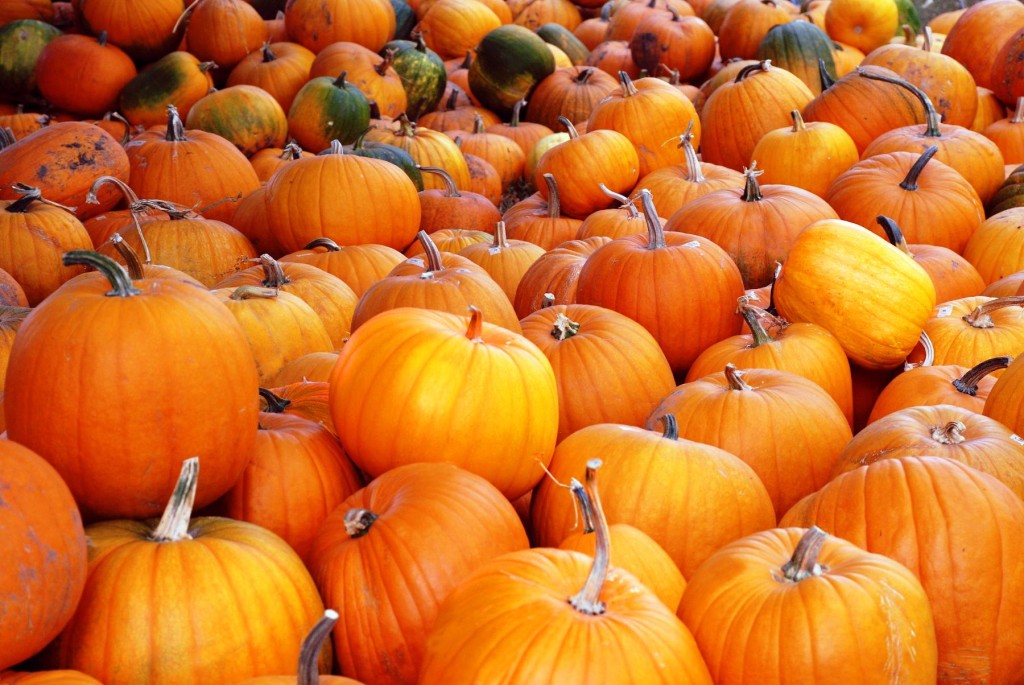We are officially in the season of pumpkin. Yes, I am one of those: a cucurbophile—a lover of all things pumpkin. Kind of like the “shrimp scene” with Bubba in Forrest Gump, I could start, “pumpkin bread, pumpkin spice coffee, pumpkin beer, pumpkin pie, pumpkin ravioli, pumpkin soup, pumpkin chocolates, pumpkin cereal bars, pumpkin gum” (ok–yuck!) … I saw a social media post this week of a box of tissues that said, “If these are pumpkin spice latte scented, I’m going to go crazy!” I really DID laugh out loud! It’s become epidemic. Yes, enough is enough. Even I have reached my limit.
We’re also officially in the season of excess. It starts with Halloween candy and lasts until the last champagne bottle pops its cork on January 1st. Whether it’s food, drinks, gifts we don’t need, or whole stores of cheap holiday decorations ad nauseam, we are quite skilled in over-doing this time of year. We need to know our limits. But excess seems to be the opposite of intentionality.
We’re also officially in the season of excess. It starts with Halloween candy and lasts until the last champagne bottle pops its cork on January 1st.
Excess seems to be the opposite of intentionality.
In their exhaustive work on Character Strengths and Virtues (2004), Psychologists Martin Seligman (Father of Positive Psychology) and Christopher Peterson identify ‘Temperance’ as one the character strengths. It’s a term we rarely use anymore after it fell from grace following more than a decade of Prohibition beginning in 1920. Simply defined, it is moderation or self-restraint. In their empirically-based taxonomy of traits, the associated virtues are forgiveness and mercy, humility and modesty, prudence, and self-regulation.
“Prudence” is another old-fashioned term we rarely see in the 21st century. It means “acting with or showing care and thought for the future”. Conscientiousness. As Seligman and Peterson state, prudence is “a form of practical reasoning and self-management that helps one to achieve long-term goals effectively by considering carefully along the way the consequences of actions taken and not taken.” Intentionality. They also note that a prudent person makes smart choices. Clearly, many of us practice prudence but just don’t label it as such.
Self-regulation, or self-control, Seligman and Peterson note, is “used in the pursuit of our goals and to live up to standards”. Sometimes thought of as self-discipline, it is often spoken of as though it is an unachievable ideal. “I wish I had the self-discipline to (fill in the blank).” But this type of self-regulation does not happen by accident. It, too, is intentional. It takes thought—it doesn’t magically happen just from wishing. It is an action. An act of determination. In fact, Seligman and Peterson liken self-regulation to a muscle—it grows stronger with regular use. It is this willful strength that helps us recognize when enough is enough and to set limits.
This slide into excess is a slippery slope. We often don’t recognize the consequences until the hole is awfully deep and we’re struggling to get out. It can happen when we’re not keeping an eye on our goal(s). Why? Because life is messy and sometimes we just lose the plot. But it’s not just about excess—it can be relational, as well. I often see this in people who are nice and kind and compassionate. They have a hard time keeping their goals and standards in clear view. I hear myself ask them, “Do you know where your limit is?” “How will you know when enough is enough?” “Where is your line?”
Many folks come to mind and it could be anyone’s story: I knew a bright, talented, sweet, funny woman who was involved with a bright, talented, fun, sensitive man. They were both madly in love. He had an admitted substance problem. She tolerated and forgave one infraction after another. As the violations grew more serious, I asked her, “What’s your limit?” She’d lost sight of her goals and her standards for her future life. At some point, she would realize enough is enough. For both of them: his substance abuse; her compassion for his struggle. She slowly slid down the slope of sacrificing the security of her future.
How will you know when enough is enough?
 I understand this struggle all too well. My own healing around recognizing needed limits inside myself occurred in a therapeutic community of women. The antidote to one woman’s excess of tolerance and subsequent mess in her life was the mantra, “¡No más!” (No more!) The message is clearly embedded in that halting image: Enough is enough. It says, “I have my future and my standards distinctly in mind. I won’t slide down this complacent path of inaction anymore. This is my limit.” My own life became much less messy (and far more marvelous) when I got clear on my own limits.
I understand this struggle all too well. My own healing around recognizing needed limits inside myself occurred in a therapeutic community of women. The antidote to one woman’s excess of tolerance and subsequent mess in her life was the mantra, “¡No más!” (No more!) The message is clearly embedded in that halting image: Enough is enough. It says, “I have my future and my standards distinctly in mind. I won’t slide down this complacent path of inaction anymore. This is my limit.” My own life became much less messy (and far more marvelous) when I got clear on my own limits.
Whether it is knowing our limits in our external world or the limits needed in our internal world, life is much more manageable when we are able to say, “enough is enough” or “¡No más!”
Now if only I can just limit the pumpkin products in my house…. nawww ….
So Know Your Limits because Life is Messy and Life is Marvelous.

